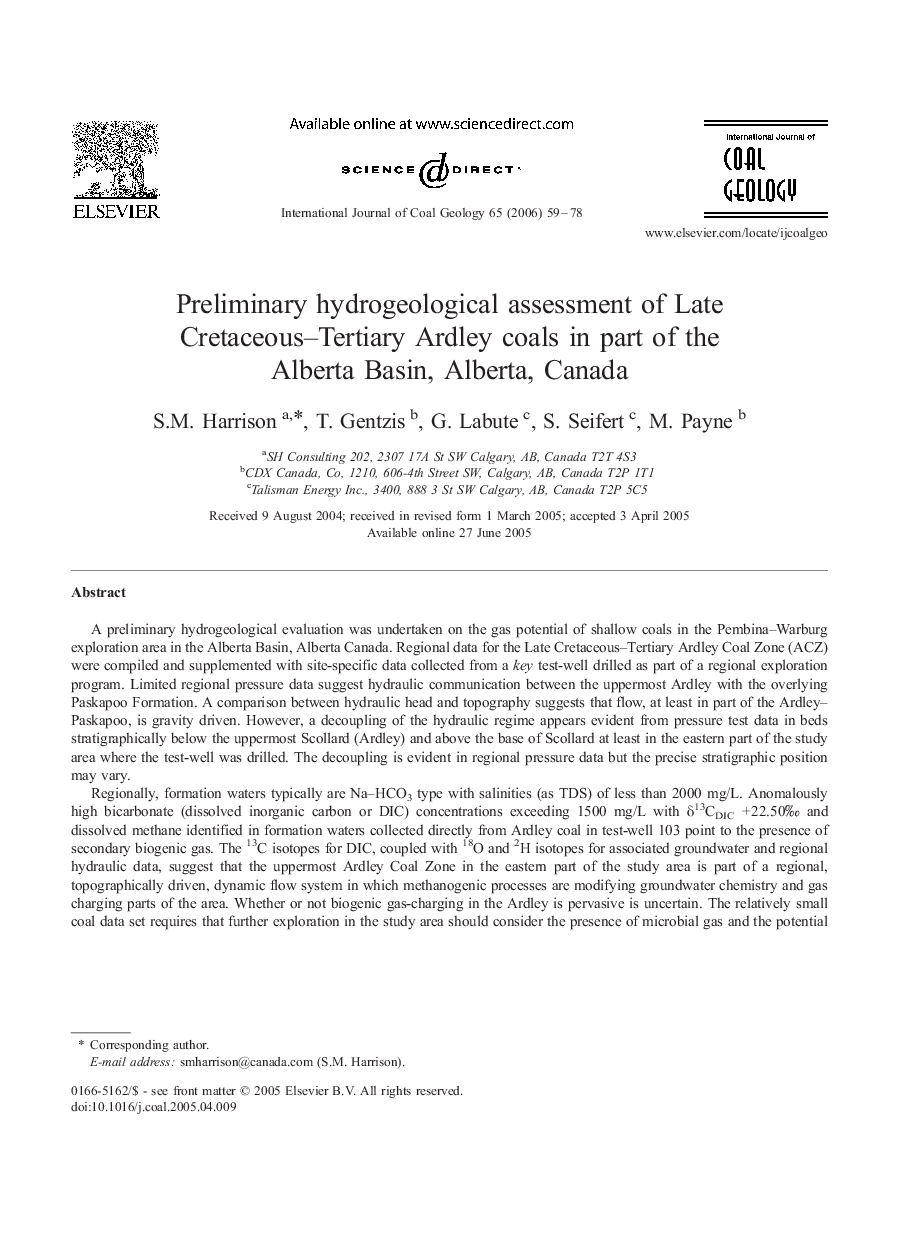| Article ID | Journal | Published Year | Pages | File Type |
|---|---|---|---|---|
| 1754350 | International Journal of Coal Geology | 2006 | 20 Pages |
A preliminary hydrogeological evaluation was undertaken on the gas potential of shallow coals in the Pembina–Warburg exploration area in the Alberta Basin, Alberta Canada. Regional data for the Late Cretaceous–Tertiary Ardley Coal Zone (ACZ) were compiled and supplemented with site-specific data collected from a key test- well drilled as part of a regional exploration program. Limited regional pressure data suggest hydraulic communication between the uppermost Ardley with the overlying Paskapoo Formation. A comparison between hydraulic head and topography suggests that flow, at least in part of the Ardley–Paskapoo, is gravity driven. However, a decoupling of the hydraulic regime appears evident from pressure test data in beds stratigraphically below the uppermost Scollard (Ardley) and above the base of Scollard at least in the eastern part of the study area where the test-well was drilled. The decoupling is evident in regional pressure data but the precise stratigraphic position may vary.Regionally, formation waters typically are Na–HCO3 type with salinities (as TDS) of less than 2000 mg/L. Anomalously high bicarbonate (dissolved inorganic carbon or DIC) concentrations exceeding 1500 mg/L with δ13CDIC + 22.50‰ and dissolved methane identified in formation waters collected directly from Ardley coal in test-well 103 point to the presence of secondary biogenic gas. The 13C isotopes for DIC, coupled with 18O and 2H isotopes for associated groundwater and regional hydraulic data, suggest that the uppermost Ardley Coal Zone in the eastern part of the study area is part of a regional, topographically driven, dynamic flow system in which methanogenic processes are modifying groundwater chemistry and gas charging parts of the area. Whether or not biogenic gas-charging in the Ardley is pervasive is uncertain. The relatively small coal data set requires that further exploration in the study area should consider the presence of microbial gas and the potential for hydrogeological controls on its distribution. However, further detailed testing will be necessary to develop a consistent and useful database for exploration and development.
